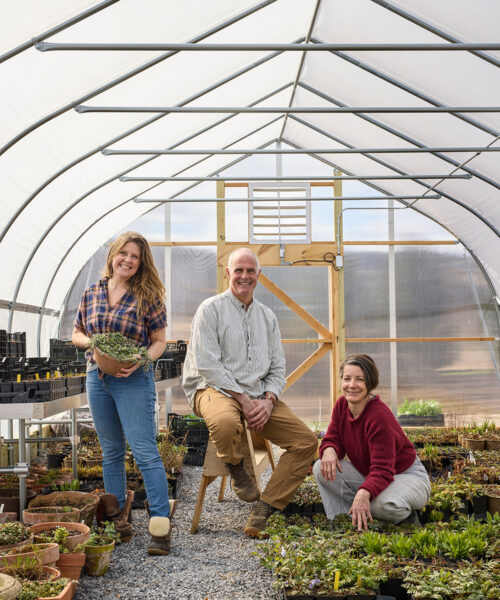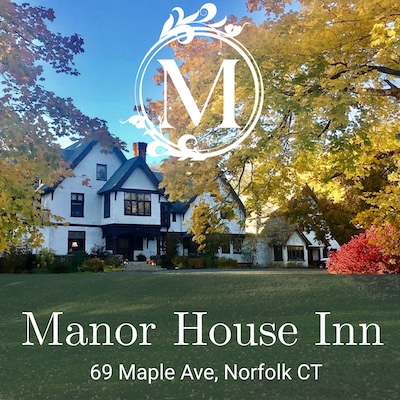April 24, 2024
By Brandee Coleman Gilmore
Lindera at The Fen is not your typical plant nursery. It’s your ECOtypical one.
To explain what that means, you need to meet Michele Paladino, Matthew Sheehan, and Heather Liljengren, three New York city transplants who found each other through a love of the land. Sheehan, a produce and willow farmer, moved to Sharon 12 years ago after a teaching career in the NYC public schools. Liljengren has a budding landscape business, LocalLand Consulting, in Washington, after spending 15 years in the NYC Parks Department. Former Brooklyn nursery owner Paladino now operates as a grower and landscape designer on the same property as Sheehan—the resident ‘plant whisperer.’ This trio is at the forefront of a growing movement to restore native habitats in a better way—what Liljengren refers to as the new gold standard—using ecotypes.
“It’s about the right plant in the right place,” says Paladino.
In recent decades, the U.S. Environmental Protection Agency helped draw up maps of ecoregions in North America, where growing conditions such as climate, soil, and geology are taken into consideration, like hardiness zones, only better. Two ecoregions cut across Litchfield County—#58 and #59. The plants and animals thriving inside them are known as ecotypes.
“If you’re going to move seed around, and you’re going to move plants around you should try to stay within your ecoregion because that’s where those genetics are adapted to, and that’s where they’re going to perform the best,” says Liljengren.
Ironically, the problem is obtaining these hyper-local ecotypes. Most of the ‘native plants’ for sale are grown in the Midwest or South. That’s why these three have gotten to work. As a botanist, Liljengren can identify and collect native plants in Litchfield’s ecoregions. Paladino knows how to harvest their seeds and grow them. That just leaves one gap, a place to set up shop. This is where farmer Matthew Sheehan comes in.
“I would not only like to grow seed myself, but also teach local farmers to grow seed, too.”
He says it’s not a major shift.
“You’re not changing techniques, you’re not buying new equipment… you’re basically not planting one plant, and you’re planting another.”
Liljengren says there’s an added lure for farmers. “Adding a few row crops in, not only are they going to help produce seed, but also attract pollinators which only are going to then help and benefit the food crops that are grown on site.”
Sheehan’s plot of ‘ecoregion 58 plants’ will create new seeds that can be sold, or nurtured into seedlings by Paladino for local landscapers or homeowners to buy. Lindera at The Fen plans to have seedlings available at Trade Secrets in Sharon, and will host walking tours this summer in conjunction with their ecoregion 59 counterpart, Tiny Meadow Farm in Danbury. Both want to be a resource for those seeking to preserve more of what makes Litchfield County special, says Paladino.
“To me, the true uniqueness is the land. And the land provides for these plants in a way that’s really distinct.”






















